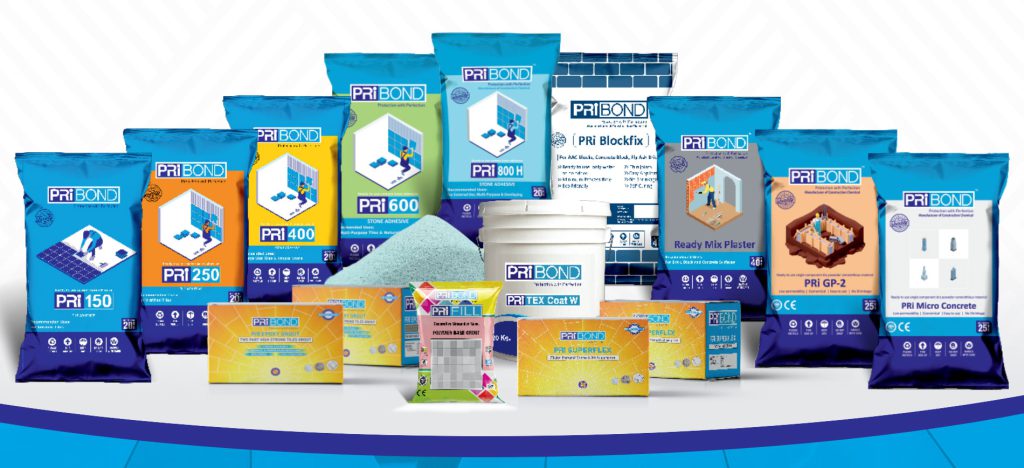
PRi PRIMER PLUS
The aforementioned data shall constitute the agreed contractual quality of the product at the time of passing of risk. The data are controlled at regular intervals as part of our quality assurance program. Neither these data nor the properties of product specimens shall imply any legally binding guarantee of certain properties or of fitness for a specific purpose. No liability of ours can be derived therefrom.
Aqueous polymer dispersion for primer, bonding agent and mastic WP
PRiBOND’S PRi Primer plus is an Aqueous, anionic dispersion of a copolymer of styrene and acrylate.
STORAGE
Primer plus has a shelf life of 24months at 10 – 30 °C in tightly sealed containers. Primer plus is fully protected against microbial attack during transport, but we would recommend treating it with a biocide in order to prevent problems with microorganisms from occurring during storage and processing. Attention also needs to be paid to the hygiene of bulk storage facilities. Further details are given in our leaflet on “The handling and storage of polymer dispersions”. This product must not be allowed to come into contact with bare iron or copper and its alloys during storage.
NOTE
The data contained in this publication are based on our current knowledge and experience. In view of the many factors that may affect processing and application of our product, these data do not relieve processors from carrying out their own investigations and tests; neither do these data imply any guarantee of certain properties, nor the suitability of the product for a specific purpose. Any descriptions, drawings, photographs, data, proportions, weights etc. given herein may change without prior information and do not constitute the agreed contractual quality of the product. It is the responsibility of the recipient of our products to ensure that any proprietary rights and existing laws and legislation are observed.
| Solid content | 49 – 51% |
|---|---|
| pH Value | 7.5 – 9.5 |
| Viscosity at 30oC | 500 – 1600 mPa·s |
| Density | Approx. 1.04 g/cm3 |
| Glass transition temperature, Tg | Approx. 22oC |
| MFFT | Approx. 20oC |
| Ionic charge | Anionic |
| Particular size | Approx. 90 nm |
Application Areas
PRi Primer plus can be used to formulate different kinds of coats as primer, sealer, mastic WP, and multi-purpose adhesive. The formulated products have excellent resistance to efflorescence, salt, alkali and water. Bonding agent and adhesive formulated with this dispersion offer excellent bonding to various substrates, for example, concrete, wood, glass, and so on. Trials must be performed in advance for each specific application, because the performance of Primer plus can be influenced by other additive and material involved.
Processing
Customers have to carry out their own trials when developing and processing products based on Primer plus. The compatibility of Primer plus with other ingredients of formulations, mixing processes, and its adhesion on different substrates, etc., are affected by a variety of factors which are too numerous for us to take into account in our own trials. This also includes testing the stability of its viscosity when it is stored at temperatures of ca. 50 °C.
SAFETY
- The usual safety precautions when handling chemicals must be observed. In particular, the place of work must be well ventilated if large quantities are being processed, the skin should be protected, and safety glasses should be worn at all times.
- A Safety Data Sheet has been compiled for Primer plus that contains up-todate information on all questions relevant to safety. Primer plus can cause irritation to the skin and mucous membranes after prolonged exposure.


